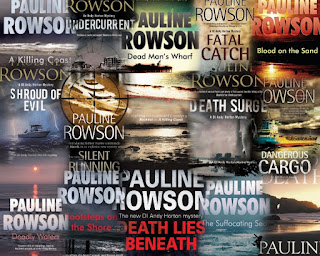Pauline Rowson explains how she develops the characters in her crime novels
I develop my characters using spider grams. I draw a circle and put each character in the centre of that circle and then I throw out lines and ask a series of ‘open’ questions about each of them.
For example, if I have the victim in the circle then I’d ask questions such as who is he? How did he get where he is? Why would someone want to kill him? Who killed him? How was he killed? What’s his background, family, education, experience? What’s his occupation? How old is he? Where does he live? What’s his personality? What does he look like? What has shaped him? How are the victim’s family, friends and others going to react? How do they see this character? What’s my main character (in my case my detective, DI Andy Horton) going to do next?
I draw up character profiles for each of the main
and secondary characters, some might be sketchier than others. But that doesn’t matter because it isn’t until
you start putting dialogue into their mouths and have them walking around and
interacting with people that they come alive.
Until then they are just notes on a piece of paper. But those notes can
be added to as your characters start to take shape through your writing.
The characters’ actions drive the plot. The surprises,
twists and turns all spring from the characters' motivations and as you write you
will find ideas occurring to you that you hadn’t previously considered. You might also discover that someone you
thought was going to be a minor character turns out to be much more interesting
when you write their part, and a major character becomes boring and sometimes
unnecessary, if that happens then cut him out.
As you write ask yourself what will this character
do in this situation? What will he/she
do next? Throw out more lines around that
spider gram. Continually ask questions about each character. Answer them as the
novel progresses. Shape and reshape them. Put them in difficult or unusual
situations, and as you do the story will unfold and the tension will build.
 |
The seventh DI Andy Horton crime novel now out in paperback, also available as an e book and unabridged audio book |


Comments